
Whimbrel on tundra nesting grounds
Whimbrel on the grassy tundra of it’s arctic breeding grounds. Whimbrel on the Atlantic flyway migrate thousands of miles from their nesting grounds in the Canadian arctic to stopover locations like the salt marshes of Cape Cod. Please check out my new short film for @manometcenter featuring their research on staging of juveniles in the Fiddler Crab rich marshes of upper Cape Cod (find the link for the film in my Bio) Whimbrel rely on pivotal stopover locations and safe wintering habitat in order to survive. Manomet’s research aims to discover these important areas - especially for young birds on their first migration in order to help preserve critical habitat.
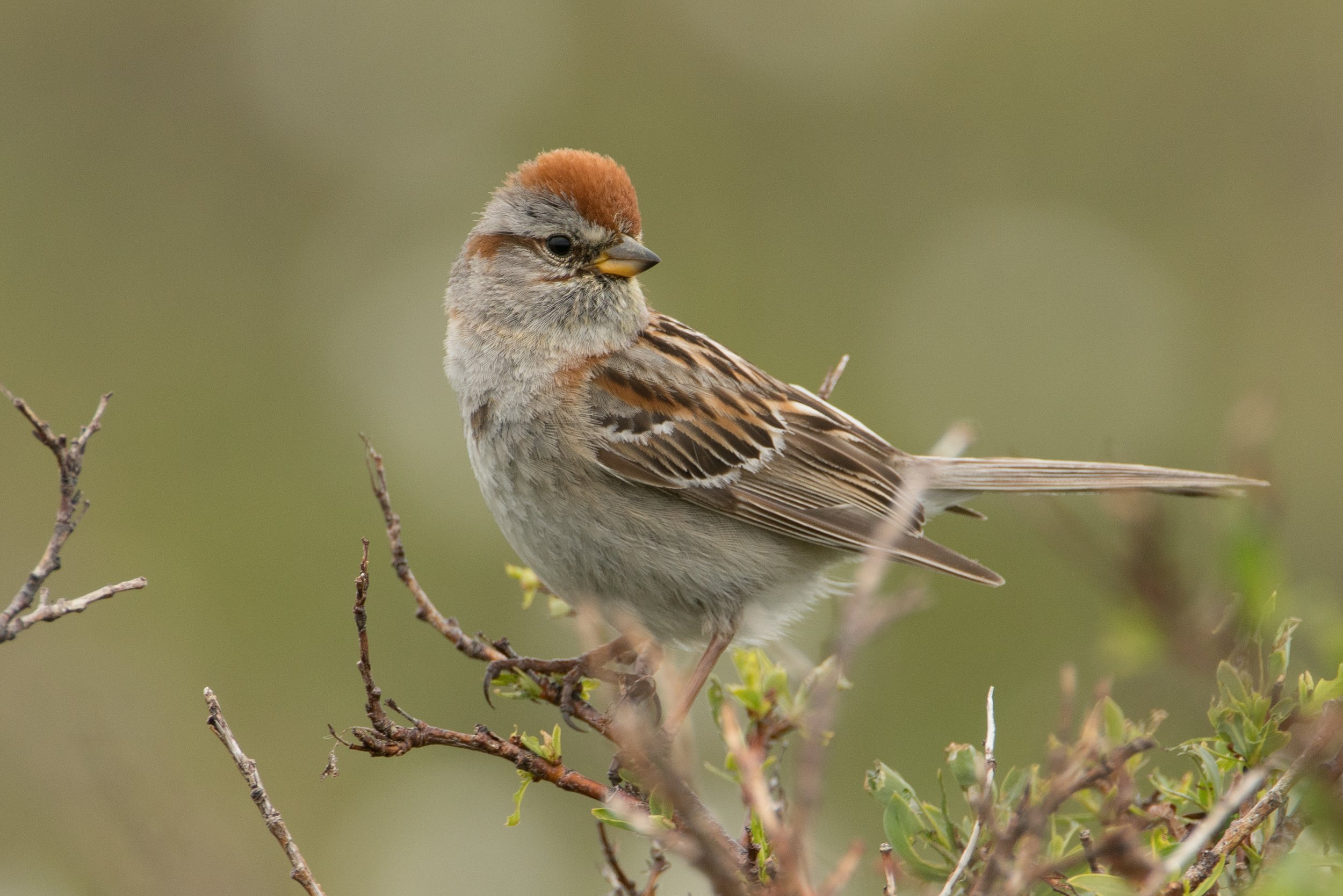
American Tree Sparrow
American Tree Sparrow near it’s nest in the arctic Willow forests of Alaska in the Spring. This species nests in a mossy, grassy spot on the ground, often on a hummock, beneath shrubby Willows. You might be seeing Tree Sparrows right now foraging beneath your feeders where they spend the winter, south of their nesting areas across the northern and central US.
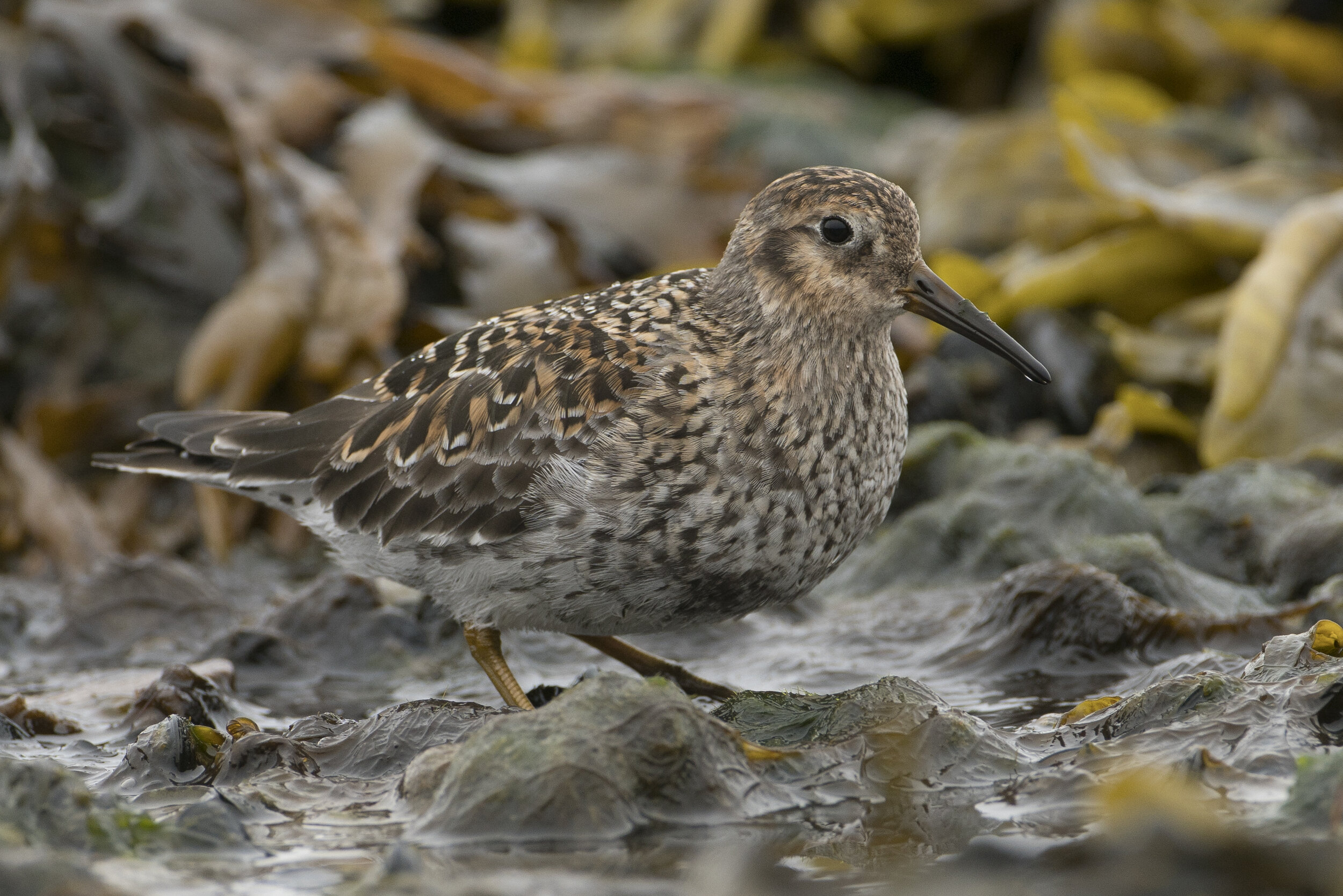
Purple Sandpiper in breeding plumage from the Varanger peninsula in northern Norway. I am lucky to have this amazing species wintering just up the coast from my home in Massachusetts but I never see them in this plumage. Last Spring I found this bird, foraging beside a group of Bar-tailed Godwit in the Norwegian arctic where they nest. Seeing this bird was a highlight of the journey!
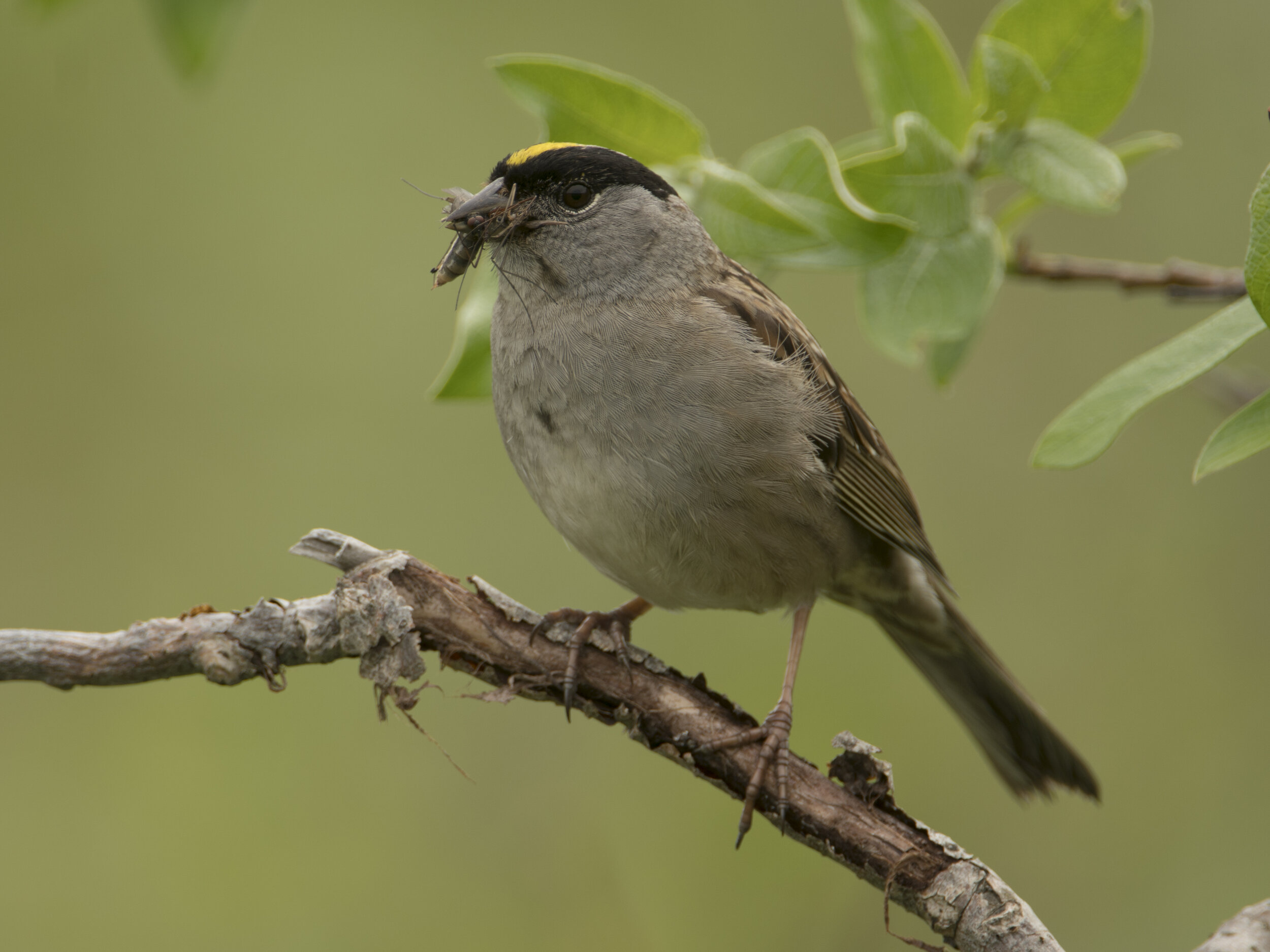
Golden-crowned Sparrow with a beak full of insects for his nestlings in the Willow woods of Nome, Alaska. This species breeds in copses of 5-10 foot tall trees along roadsides and in ridgeline creases, surrounded by open tundra. The zoomed in view in the second shot gives a bit more detail on the insect meal - a few giant Alaskan mosquitoes and even a Dipteran fly.

A Red-throated Pipit snatching a tiny worm on the edge of a melting tundra pool in the high country of northern Norway.

Eurasian Dotterel on the tundra in northern Finland. Processing my best images of this species I pondered the question of what, explicitly makes for a good wildlife portrait. I like the expressiveness of the first shot, the angle of the bird’s head and face and the view of both the breast and the curve of the gold-edged wing coverts. The second shot is clearer, full profile with excellent posture and positioning and great habitat. Which do you prefer and why? I would love to hear from anyone willing to share their thoughts!

Eurasian Dotterel on the tundra in northern Finland. Processing my best images of this species I pondered the question of what, explicitly makes for a good wildlife portrait. I like the expressiveness of the first shot, the angle of the bird’s head and face and the view of both the breast and the curve of the gold-edged wing coverts. The second shot is clearer, full profile with excellent posture and positioning and great habitat. Which do you prefer and why? I would love to hear from anyone willing to share their thoughts!
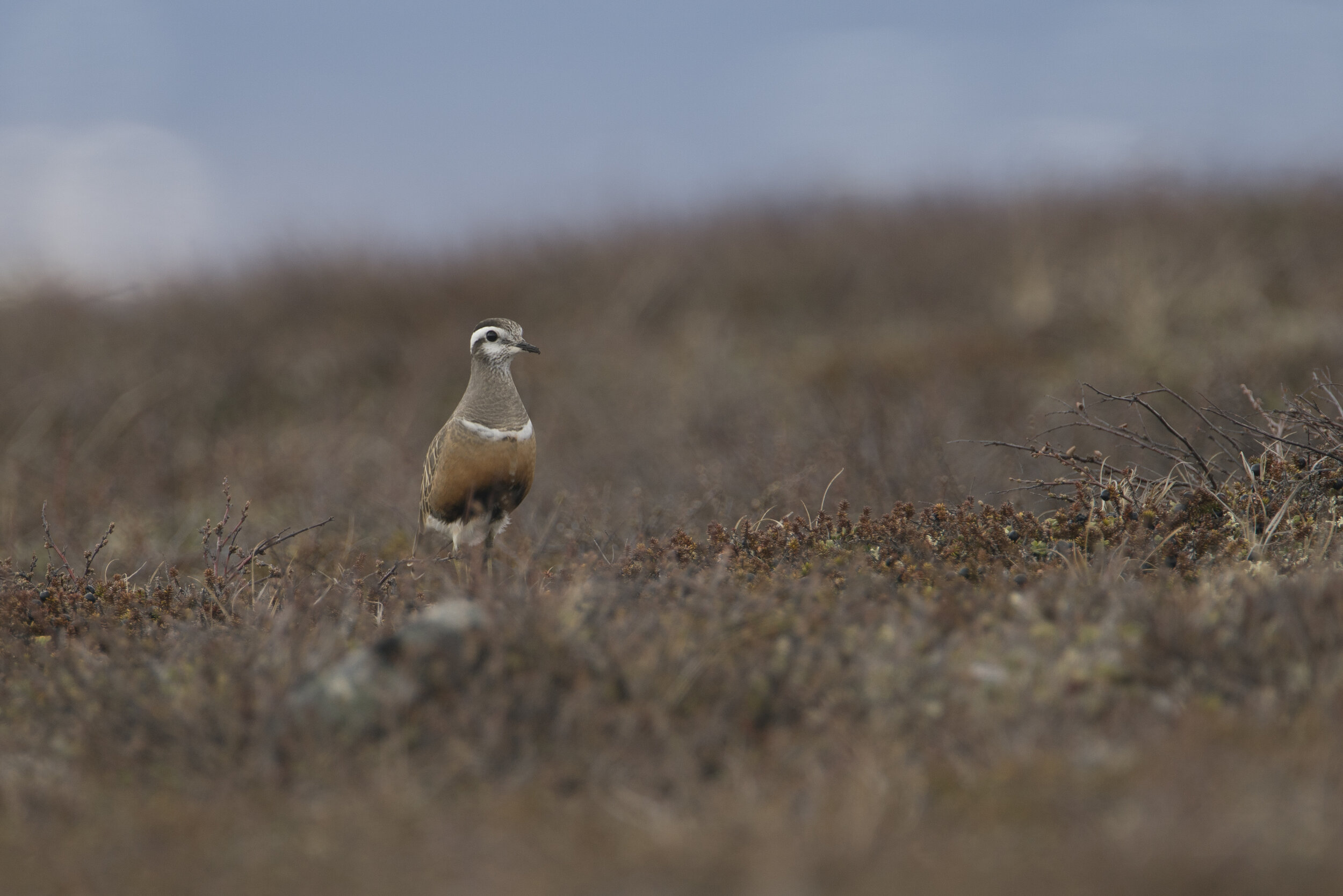
A few weeks back I posted a nest photo from the alpine tundra of northern Finland. Here is the reveal - a beautiful Eurasian Dotterel, female, walking back to her nest from this past Spring. Second image is another shot of the nest with a clutch of three. I dreamed of seeing a Dotterel and beholding their display flights. We searched many slopes, in known breeding areas this year, some looked perfect, some were completely snow-bound. After many long walks atop the beautiful, yet silent tundra slopes - even running into birders who had been walking around broadcasting Dotterel song from a speaker, I was lucky enough to find a nest and watch the Dotterel return and incubate. Definitely one of the best moments of 2019! Happy New Year!

Who's nest is this? Hint: a Shorebird of the Scandinavian alpine tundra. Only three eggs in this nest. Sometimes Shorebirds do lay a clutch of only three eggs but in this case I believe that the female was soon due to lay a fourth. When I found this nest, the incubating bird was the female. In this species, it is uncommon for females to incubate for long, beyond the time of a complete clutch - (another hint to the identity of this species). Finding Shorebird nests and glimpsing a window into their furtive lifestyles in the Arctic springtime is one of the most amazing and fascinating experiences I've ever had (and one I look forward to every year I am able to make it to the arctic). Stay tuned for the answer to this nests identity and for an upcoming photo story on my webpage about the experience of finding this nest.

Surfbird, foraging atop an eel grass covered block of ice on the Seward peninsula shore. Surfbirds sometimes gather at the shore of Norton Sound in the early Spring when their montane, alpine tundra nesting areas are still covered with snow. In these years Surfbird can sometimes be easily seen. Other years, they arrive more stealthily, disappearing into the high country where they nest on mostly inaccessible ridge tops.

Red Phalarope foraging in a meltwater pool on migration to the breeding grounds in the Alaskan arctic. The migration flights of Shorebirds are some of the most impressive feats in the animal kingdom. These Red Phalarope individuals likely arrived here on the shores of the Seward peninsula in Alaska after a winter spent in the pelagic zone of the Pacific Ocean, many miles from land. Unlike most of their cousins, Phalaropes are seabirds for much of their lives, spending time on land only during their nesting season. In this photo, three brightly colored females and a male (back-most individual) swim and forage for food items swirled around by the paddling of their lobed feet. #worldshorebirdsday was this week with Global Shorebird counts continuing all week - get out to your local wetland areas and submit your counts to eBird. You can Share any eBird checklists you submit with the username WorldShorebirdsDay for the tally.
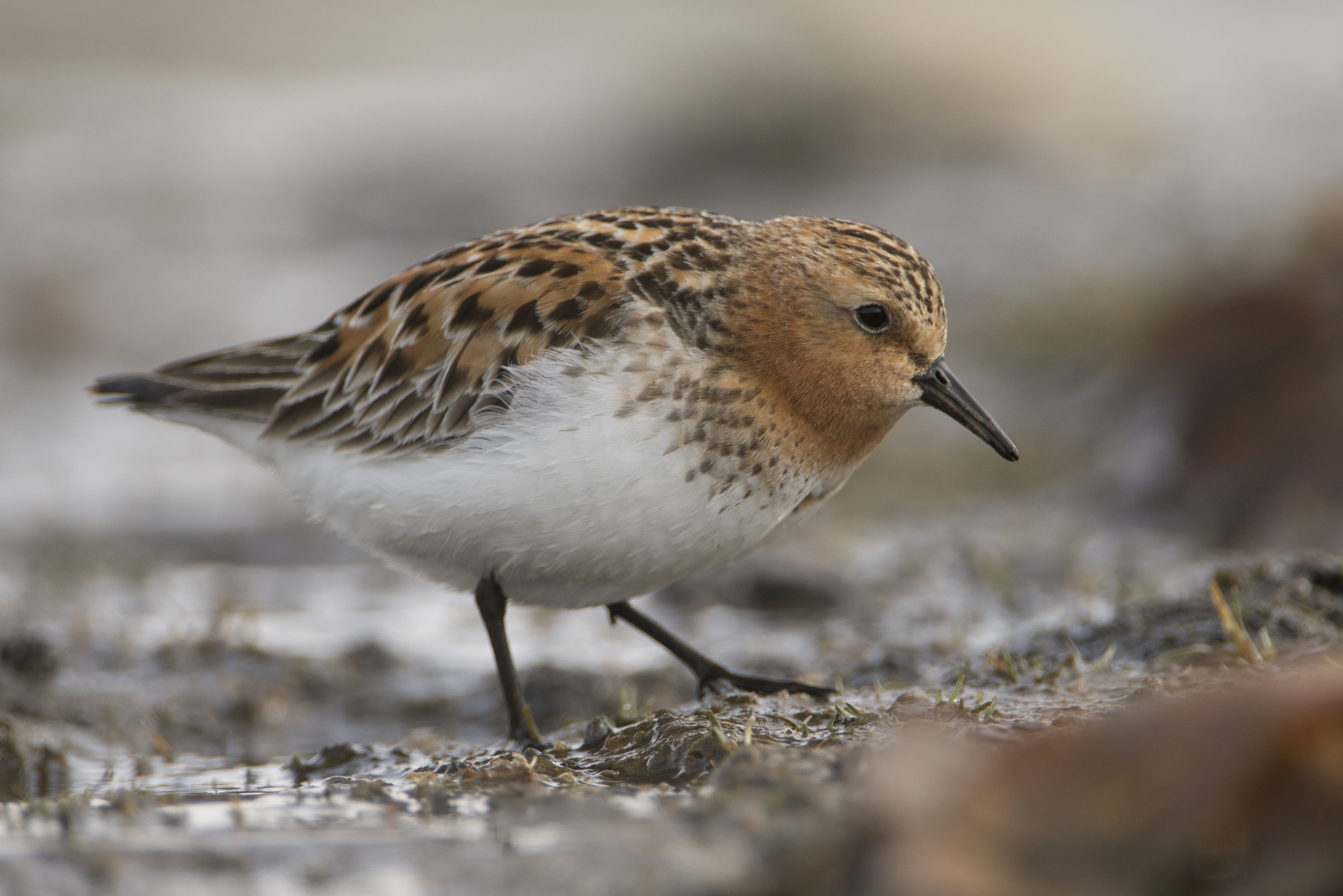
Red-necked Stint, Utqiagvik, Alaska. Watching this bird forage, I noticed a low-stepping, almost creeping posture as the bird moved forward. Foraging style can be diagnostic, just like flight or posture...a lesson learned from this encounter that I will try and apply in the future when scanning Shorebirds on migration, looking for different species on flats from afar, (when they're in far less noticeable plumage as this breeding plumed individual). Red-necked Stint breed primarily in arctic Russia but show up annually on migration and breed occasionally on the Alaskan side of the Bering Sea (as far as is known).

Red Knot foraging at sunrise on the South Carolina coast
A massive flock of Red Knot with Sanderlings foraging at sunrise on the beautiful shores of South Carolina from this past Spring. In a couple of weeks I will return to continue work documenting Red Knots here for a project describing the importance of these areas for rufa Red Knot on their way to their arctic breeding grounds.
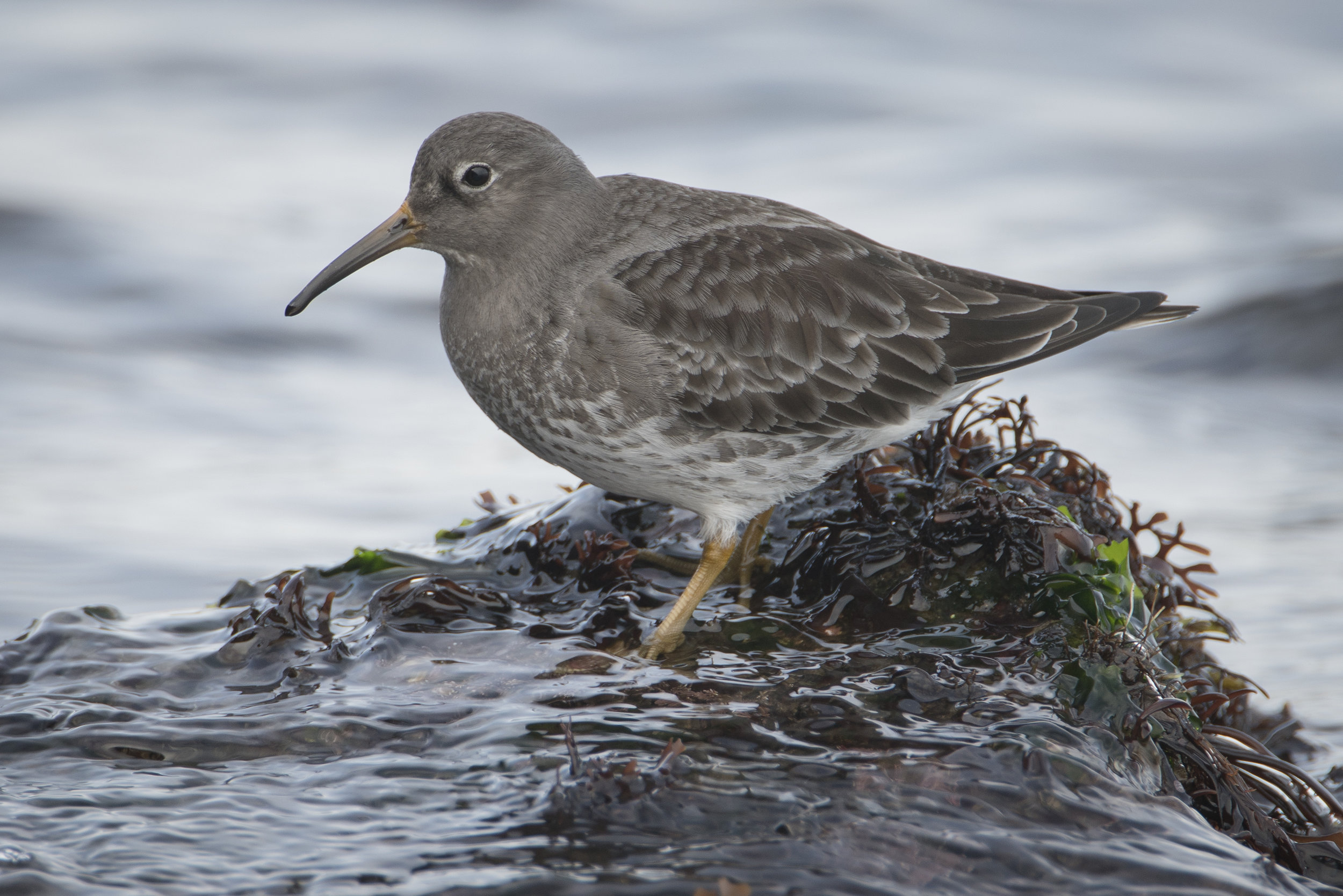
Purple Sandpiper foraging atop a seaweed covered rock along the rocky, Massachusetts coast. My favorite wintertime resident of my home coastline, these birds are always exciting to watch when you can get close.
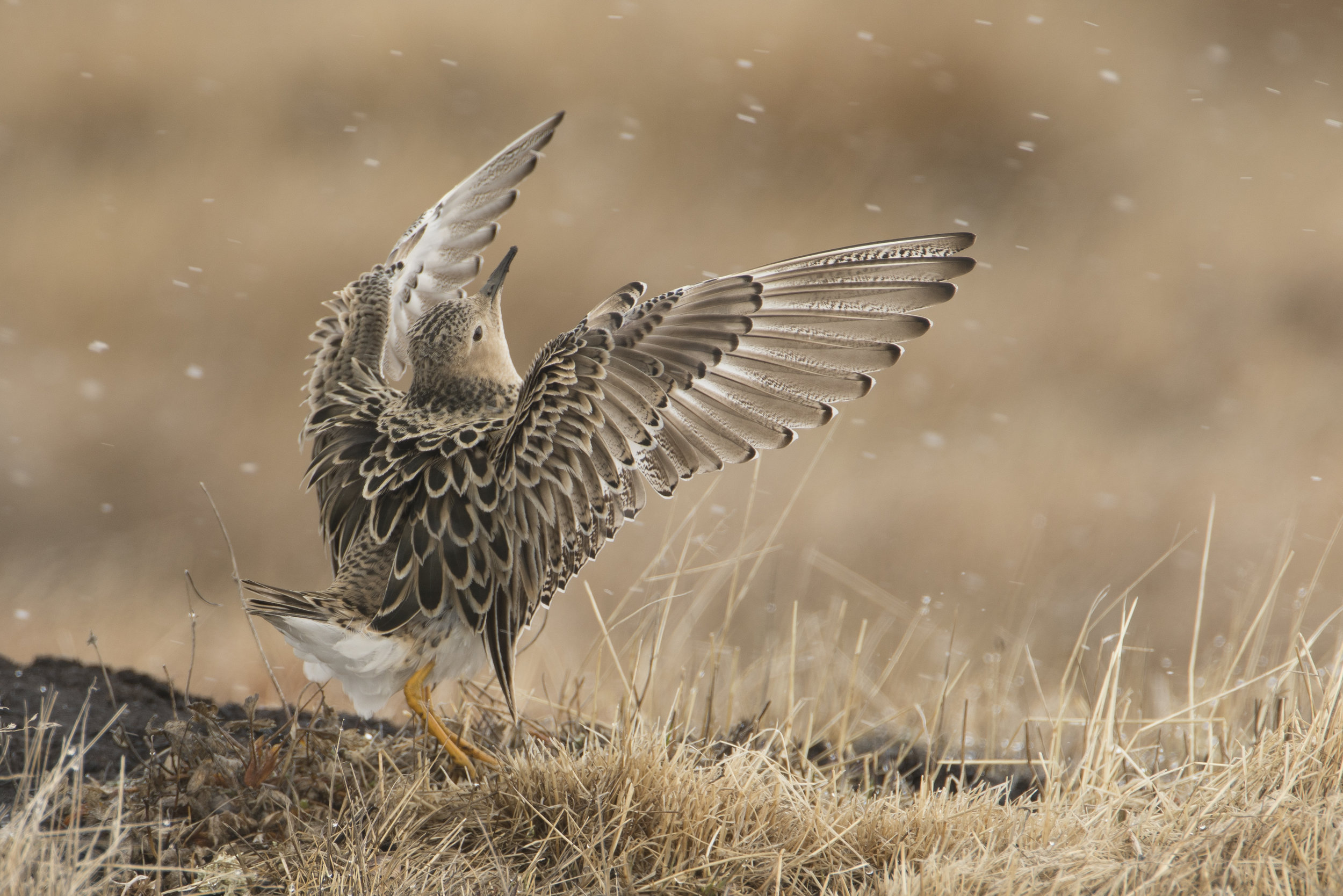
Buff-breasted Sandpiper display on a lek near Utqiagvik, Alaska from this past Spring. I was thrilled to learn that this photo has made it through to the final round of judging in the prestigious Wildlife Photographer of the Year Contest in England. Wish me luck!

Sabine's Gull
Sabine's Gull feasting close to shore on fish eggs after a spring spawn near the coast of Norton Sound near Nome, Alaska.

I spent the cold afternoon with this Black-throated Gray Warbler - an unexpected visitor to the Massachusetts coast. This bird foraged intently, snatching insects along the edge of the beach, even devouring a pill bug pulled from the base of dune grasses.

Anianiau - foraging
The endemic Kauai Anianiau foraging in a blooming Ohia tree in the amazing Alakai preserve. Turn your sound up to hear the honeycreeper chorus in the background! The Kauai Forest Bird Recovery Project (who I worked with to film this threatened species a few years ago) has a fundraising campaign up right now called Songs Not Silence - Kauai Forest Birds
Please consider giving a bit to help study and save Kauai's amazing native birds - they have great fund-raising t-shirts available on bonfire too!
Instagram Feature
This page showcases the most recent posts to my Instagram account. Instagram’s small format is great for mobile devices but lacks the capability to share all of the detail I enjoy sharing. Follow me on Instagram at benjaminmclock

















